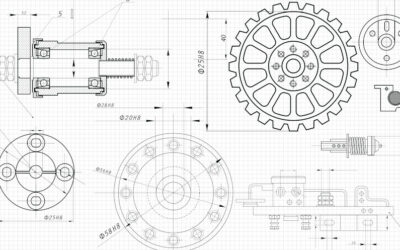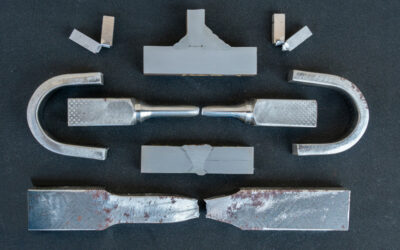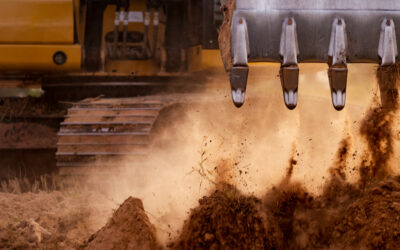Have you recently come up with a product idea, or do you need to manufacture parts with special requirements? If so, you’re likely looking to create high-quality parts while reducing manufacturing costs and improving aesthetics and ease of assembly. One essential design feature that can help you achieve these is the snap-fit joint.
However, while seemingly simple, there is more to snap-fit joints than meets the eye. For instance, there are several types of snap-fit joints, each suited to different product design scenarios. In addition, there are several essential design tips you must adhere to when designing snap-fit joints.
This article covers all of these and more. If you want to design your snap fits for easy manufacturing and avoid costly mistakes, this article is for you!
What is a Snap-fit?
A snap-fit is a small protrusion (in the form of a hook, bead, or head) that deflects during assembly to mate with another part, as shown below.

Figure 1: Snap Fit
Source: Wikimedia Commons
Notice how the male part deflects and goes inside the groove on the female part to form an assembly. The simple design allows you to create assemblies by only applying a small force on the joint’s flex part (or male part). Likewise, disassembling snap-fit joints is quite easy without damaging the parts, unlike conventional joining methods like welding.
Common Types of Snap-fit Joints
#1 Cantilever Snap-fit Joint
The cantilever snap-fit joint is the most common type of snap-fit joint. And as its name implies, a cantilever snap-fit joint features a cantilever beam and a tapered hook on the male part. This hook slides into the opening of the female part and bends back to lock the joint into place.
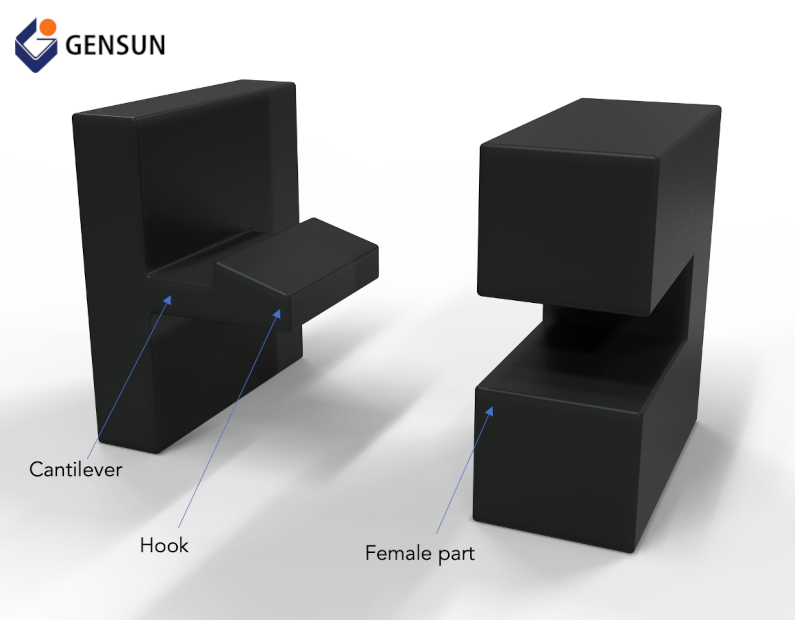
Figure 2: Cantilever snap-fit joint
Cantilever snap-fit joints are ideal for assembling two similar halves of a product casing that need to be easily separated. For example, you’ll find them in control panel modules and plastic product casings.
Learn more: Understanding how to Manufacture Plastic Prototypes
#2 Annular Snap-fit Joints
The annular snap-fit joints are typically used to join symmetrical round parts or cylindrical-shaped parts. These joints feature a bump (or ridge) around the circumference of the male component, which interferes (and mates) with the groove in the tube-shaped female component.
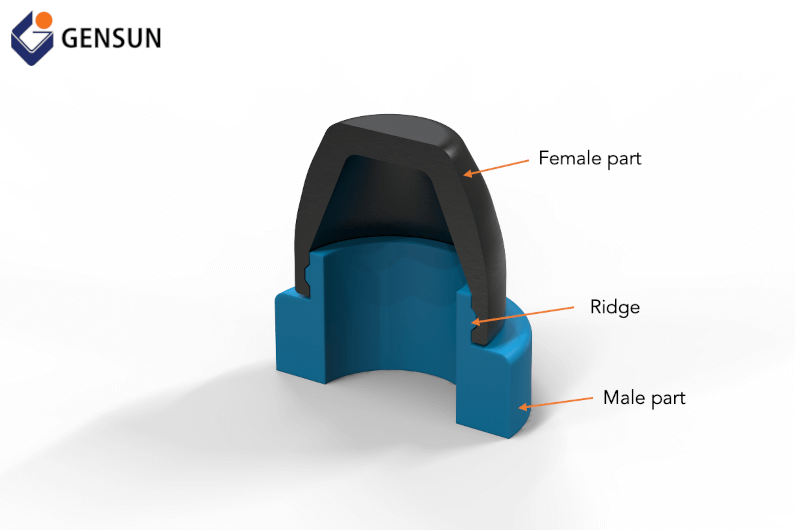
Figure 3: Annular snap-fit joints
The annular snap-fit joints are useful in assembling pens and bottles with snap-on caps, plastic containers, and lamp housings. However, these joints are much more challenging to design than the cantilever snap-fit joints. For instance, the force you need to snap a product with annular snap fit joints is difficult to calculate (or predict) without the help of a highly experienced engineer or technician.
#3 Torsion Snap-fit joints
The torsion snap-fit joints are quite similar to the cantilever snap-fit joints. However, unlike the cantilever snap-fit joints, torsion snap-fit joints rely on spring force to join two components. For instance, a torsion snap-fit joint features a spring-loaded lever on one of the components to be assembled. This lever snaps into place when you press the mating parts against one another. They are ideal for fastening a hinged lid on a container.
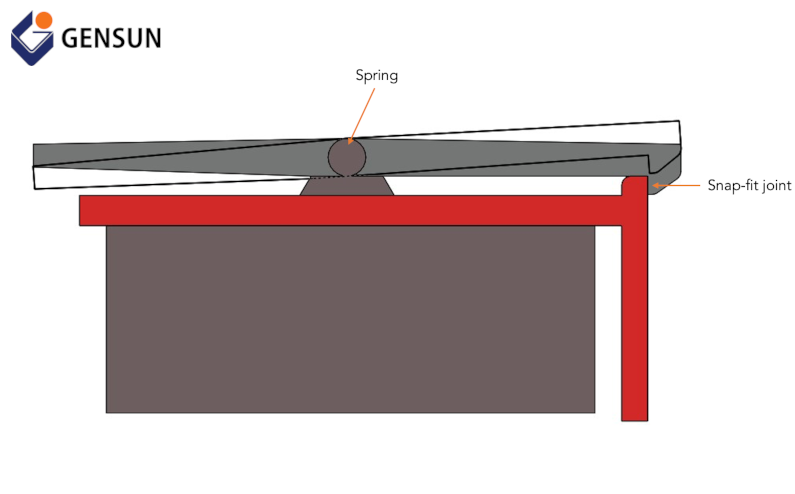
Figure 4: Torsion snap-fit
How to Design Snap-fit Joints: 3 Essential Tips
#1 Avoid Sharp Corners at the Base of the Cantilever
Sharp corners are the major cause of failure in cantilever snap-fit joints because they concentrate most of the load (or stress) to the root of the cantilever. Top-tier product designers reduce stress concentration by including fillets at the base of the cantilever, as shown below.
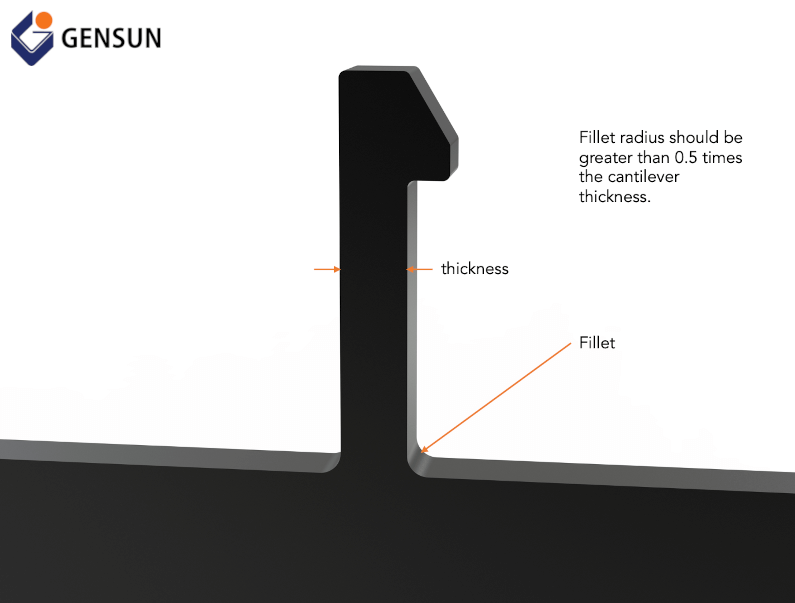
Figure 5: Include fillet at the base of the cantilever
These fillets help to distribute the stress over a broader area, reducing the possibility of failure. To get the best of fillets in cantilever snap-fit joints, you should ensure that the fillet radius is at least 0.5 times the cantilever thickness.
#2 Taper the Snap Fit
It’s not enough to include fillets at the base of the cantilever; top-tier product designers also taper the entire length of the cantilever, as shown in the Figure below.
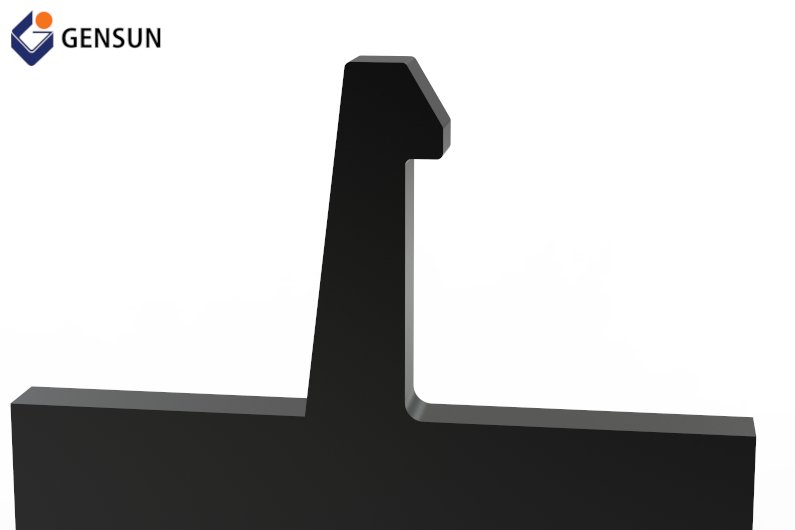
Figure 6: Taper the entire length of the cantilever
This is because snap-fit designs with constant cross-section areas experience an uneven strain distribution. As a result, they tend to fail more quickly in operation compared to tapered designs. In addition, tapered designs use less material, allowing you to reduce material and manufacturing costs significantly.
#3 Increase the Width of the Clip (or Hook)
Top-tier product designers design snap-fit joints to have a width of at least 5 mm. Snap-fit designs featuring wide clips (or hooks) are generally strong and stiff, making them ideal for applications that demand high load-bearing capabilities.
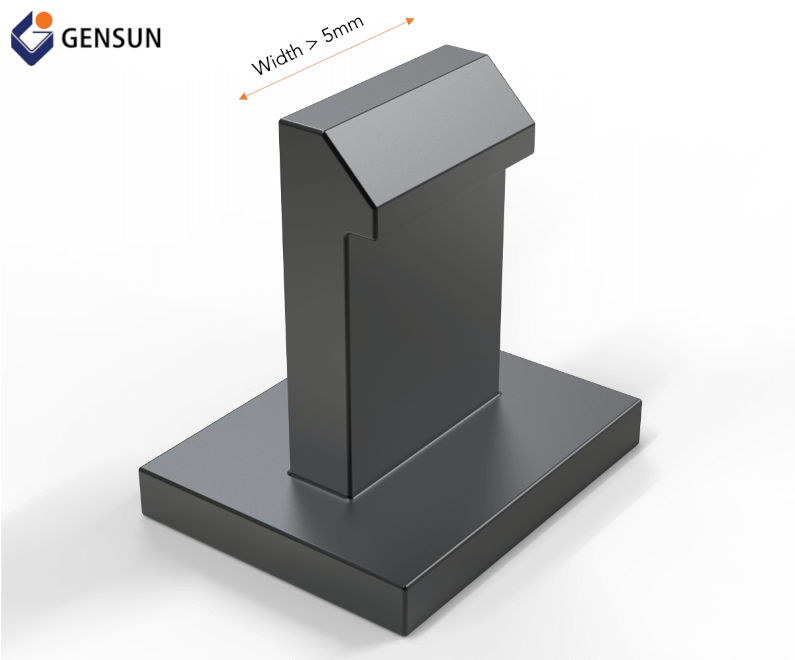
Figure 7: Increase the width of the clip
Snap Fit Joint Design and Manufacturing: Gensun Can Help
Snap-fit joints can help you achieve impressive product aesthetics, assembly, and strength, so long as they are correctly designed and manufactured for the specific application. Therefore, the success of your product design and development project depends on you and your manufacturer.
Gensun Precision Machining is a leading provider of manufacturing services across Asia. We have been in business for nearly two decades, providing high-quality manufacturing services to customers in several industries. We utilize state-of-the-art processes, including CNC machining, injection molding, and 3D printing, to create high-quality snap-fit joints and products.
Learn more about our CNC machining and rapid prototyping services.

